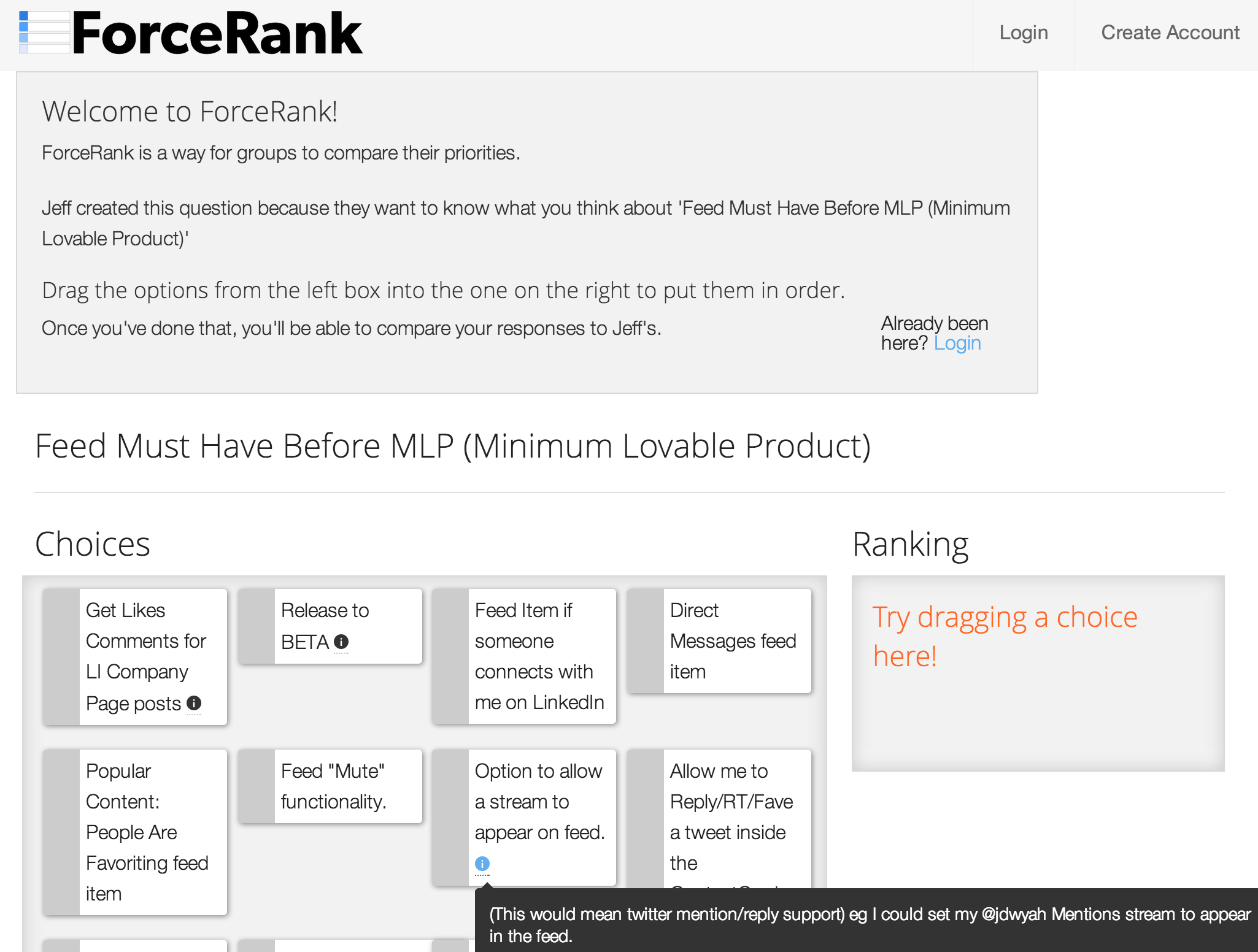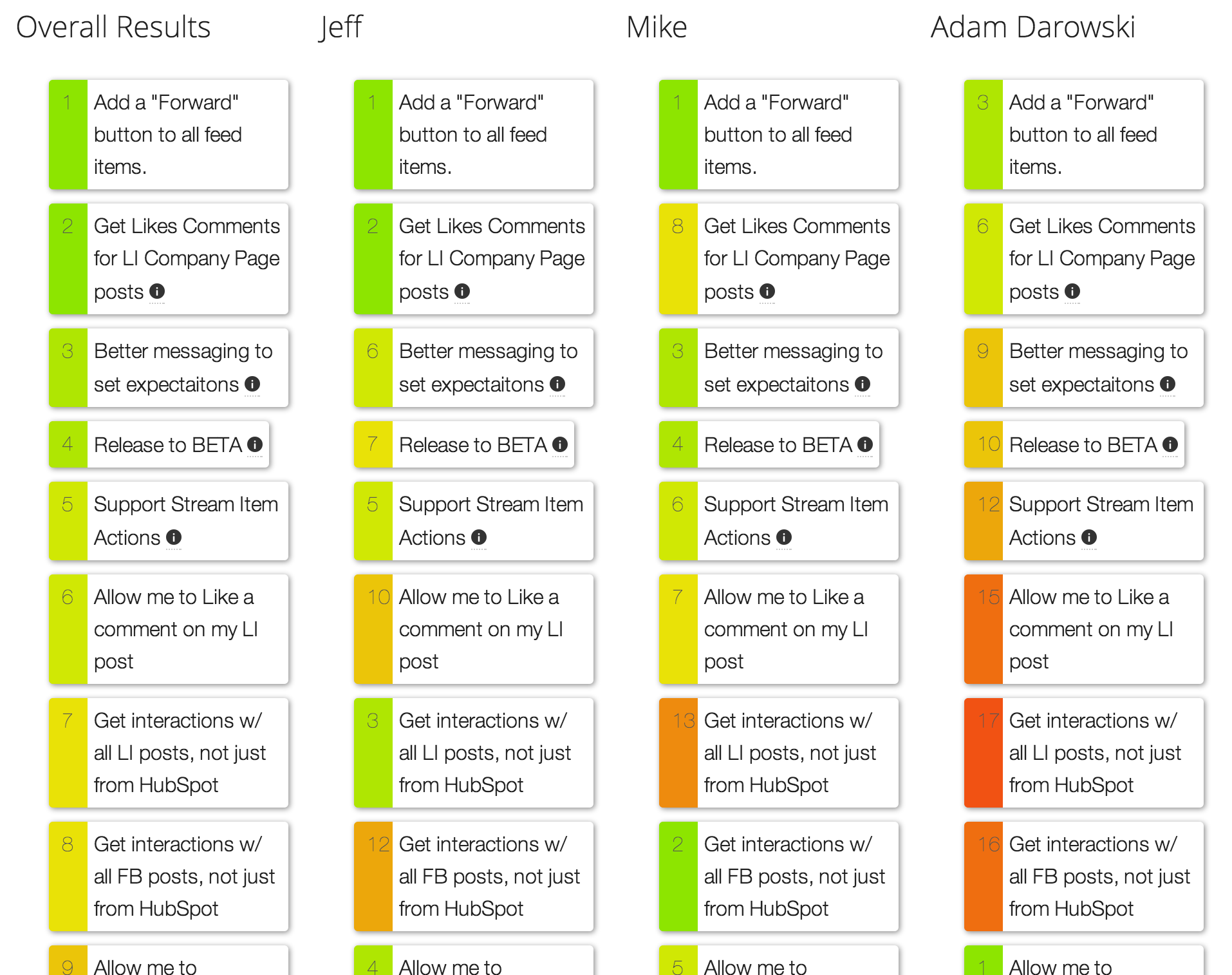A stack ranking tool for group decisions
Groups are hard. Group decisions are harder.
It's like asking a team of 15 people to birth a baby. 15 different goals. 15 different perspectives. As a leader, you're supposed to nurture these people and pull their good ideas out. You're supposed to spin the threads of each indivdual's ideas into a rope that is stronger than it's constituent parts. Easy right?
Individuals are... Individual

Amy
- An opinionated, creative, happy extrovert who genuinely enjoy the banter and arguments inherent in meetings
- Never reads emails.
- Doesn't feel the need to come to a conclusion in this meeting.

Arne
- Detailed. Determined, high-torque individual.
- So focussed on his area that he can't see the big picture.
- Attempts to turn each meeting into his platform for his pet rock.

Lisa
- Gets. Shit. Done.
- Can bowl over slower thinkers.
- Under stress, doesn't necessarily care what is getting done as long as it's scheduled.

Tom
- Brilliant. Problem solver.
- Can retreat to making snarky unhelpful comments instead of putting his butt on the line.
- Nods & smiles while his internal monologue astutely tears apart unworkable elements of the plan.
What is to be done?
And you're expected to get these people to agree on a company strategy? We'd be lucky to pick an agreeable restaurant together.
The good news is that the research is clear. There are proven methods ways to make groups make better decisions. Call it the Dephi Method, call it Team Idea Method Mapping, call it Nominal Group Technique. The bottom line is clear. You will have better results if you:
-
Step 1: Make everyone think about things on their own.
-
Step 2: Analyze individual's thoughts. Compare them to each other to detect rifts and oversights.
-
Step 3: Synthesize. Make a plan. Disseminate the plan.
This is NOT GroupThink.
GroupThink:
- Dominant personality expresses plan A.
- Everyone critiques plan A.
- Small improvements are made to plan A.
- Plans B, C, D never get off the ground
- People that disagree with Plan A decide not to "rock the boat".
- Result: Local maxima around plan A.
Good Group Decision Making:
- All participants think for themselves. By themselves.
- Meet as a group to review results.
- Have easy ways to compare thoughts and expose rifts and gaps.
- Cohesive planning weighs group concerns.
- Result: Plan is an Opinion with wide support, with clearly delineated concerns spelled out.
ForceRank makes this easy
ForceRank makes people think about priorities, make tradeoffs and propose a plan.
This quarter's major priorities, Which vendor to choose, Where to go for the company picnic. Whatever your question is, ask it quickly provide some choices and send the link to your colleagues.
They can quickly drag and drop the choices you've supplied into their preferred order and you can use this to facilitate the most useful meetings you've ever had.
“ It takes hardly any time to setup, but the results have lead to huge insights alrady. It's fun and easy to use. I'm using it for my team at work. And even using it on the side to plan a vacation. Using ForceRank has lead to some of the most productive and insightful meetings of my career.
Step 1: Make everyone think for themselves.

Step 2: Compare results. Find patterns. Dig deeper.

Pricing (As if you could put a price on better decisions)
